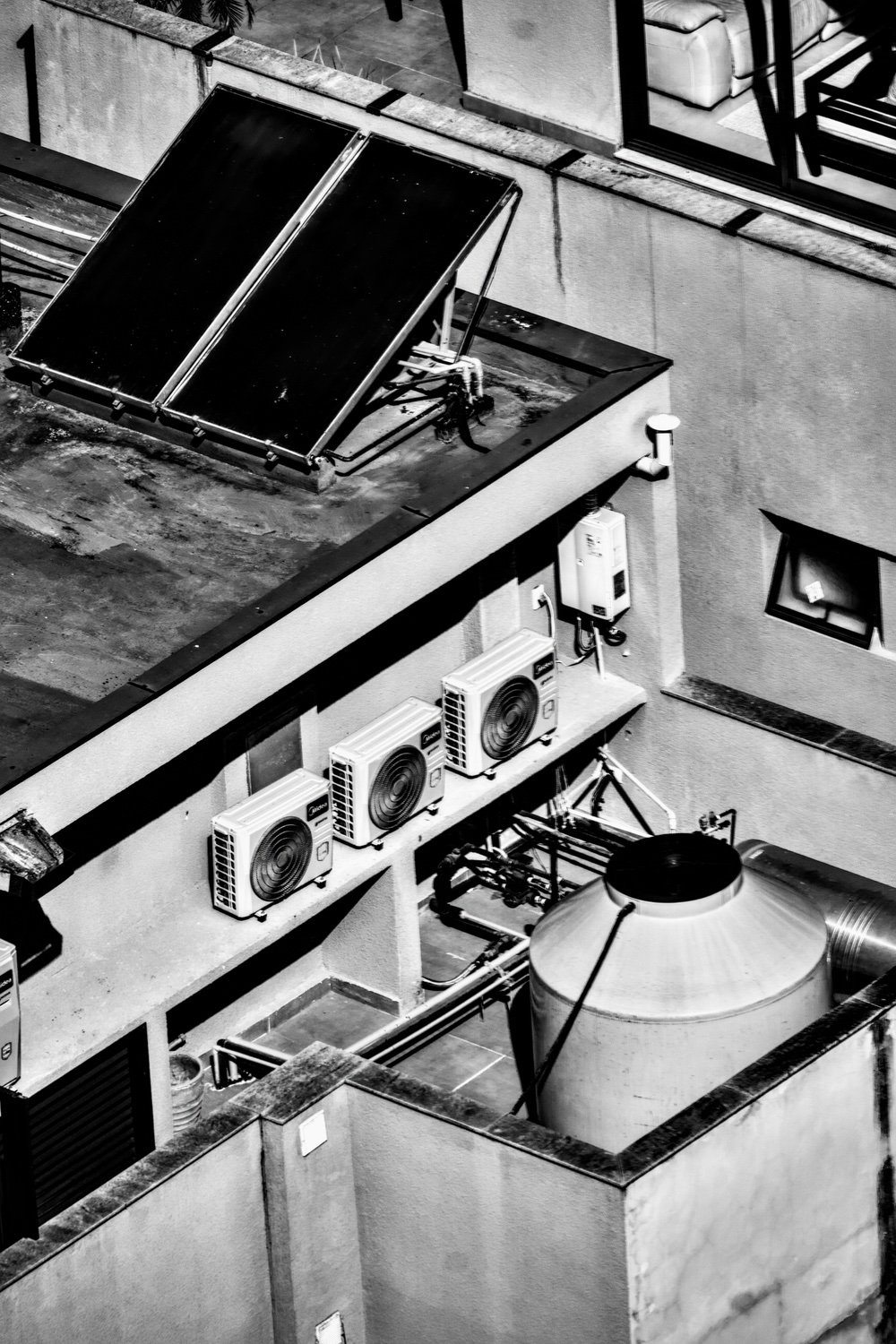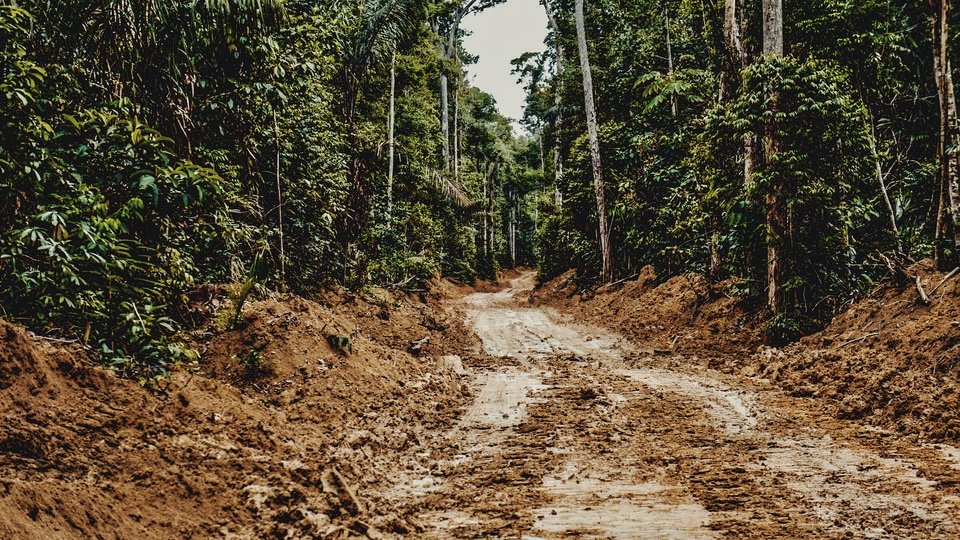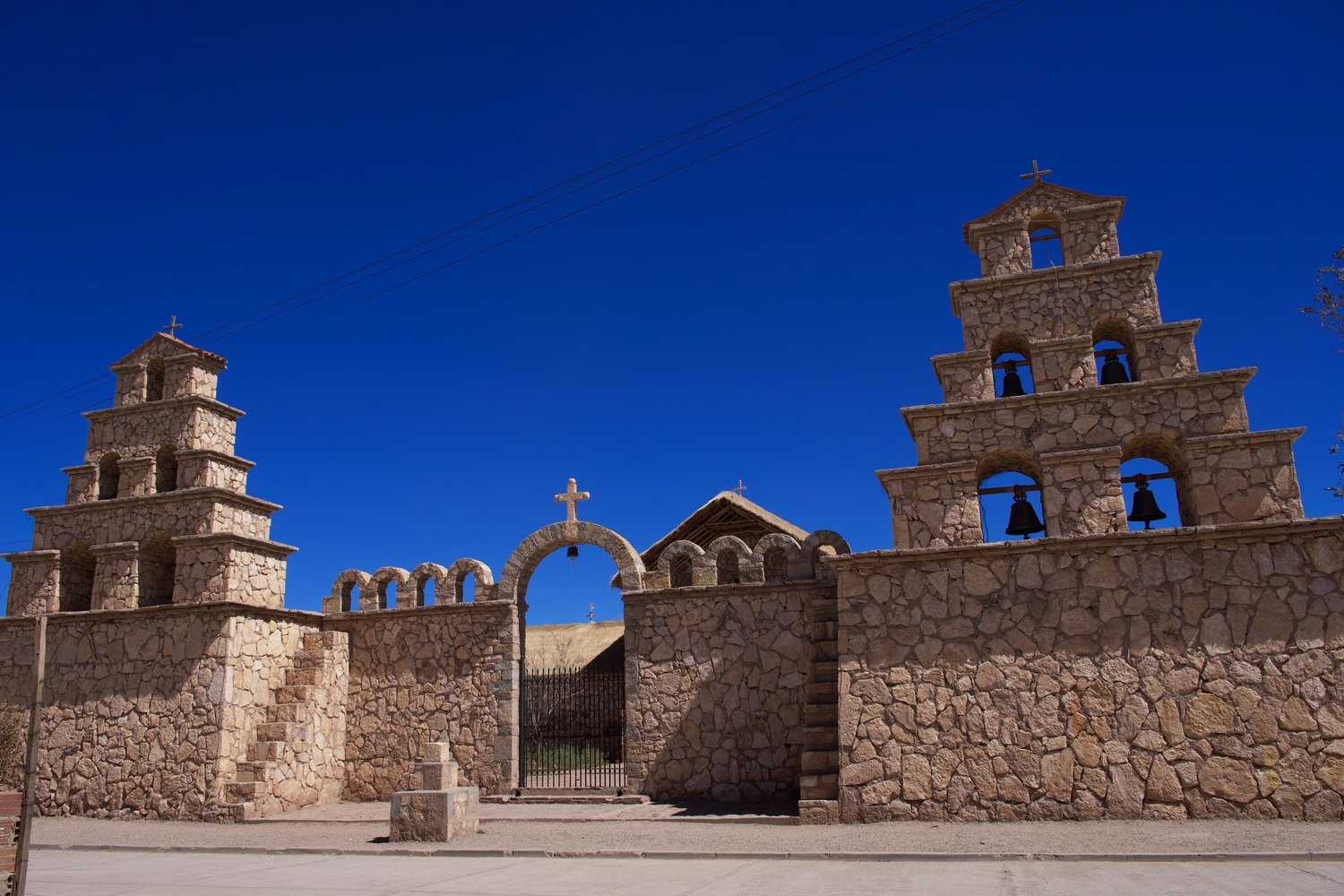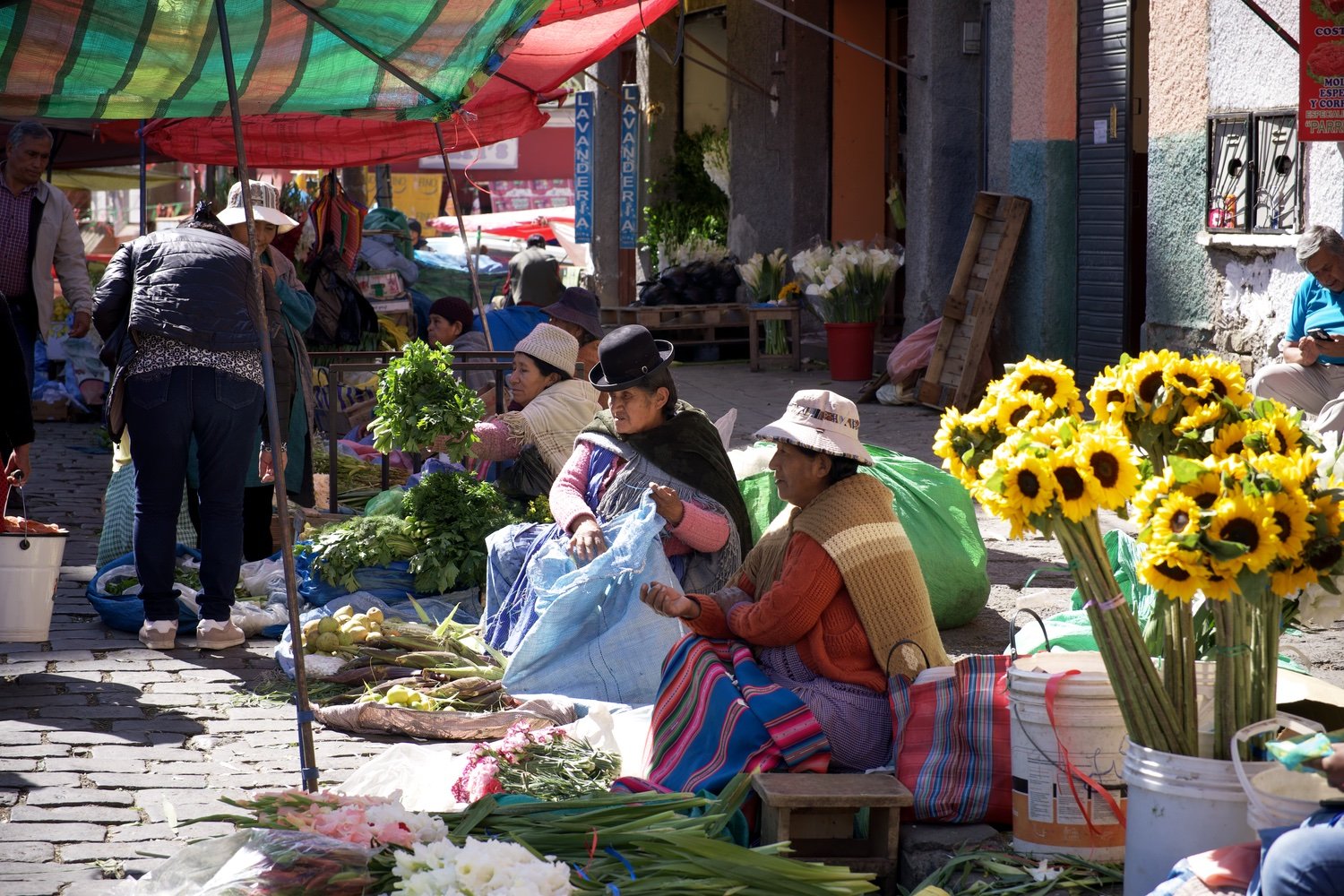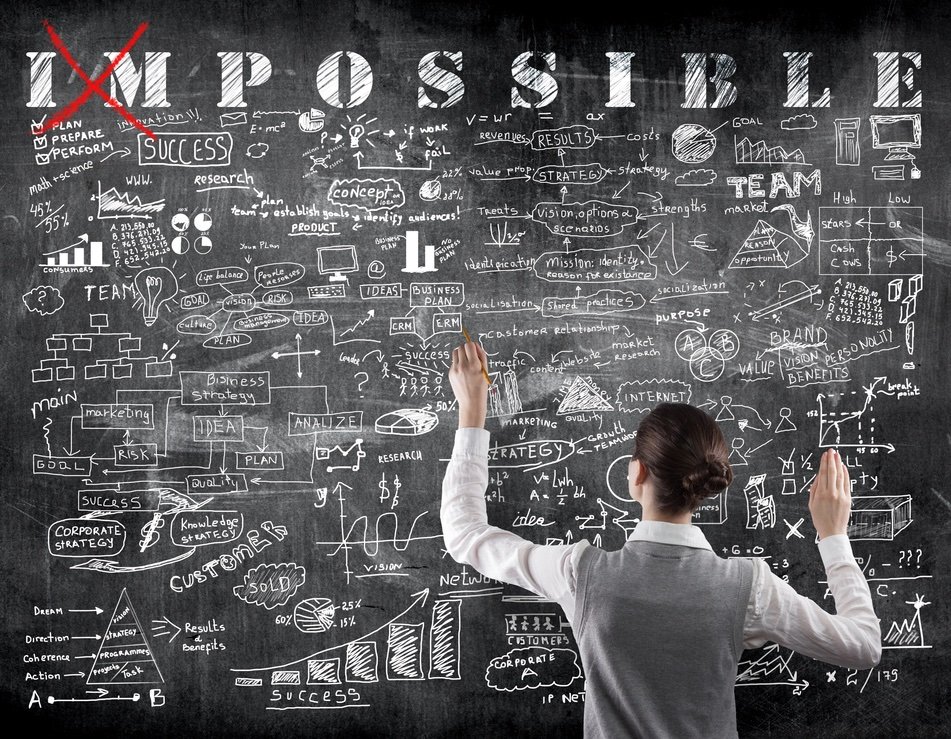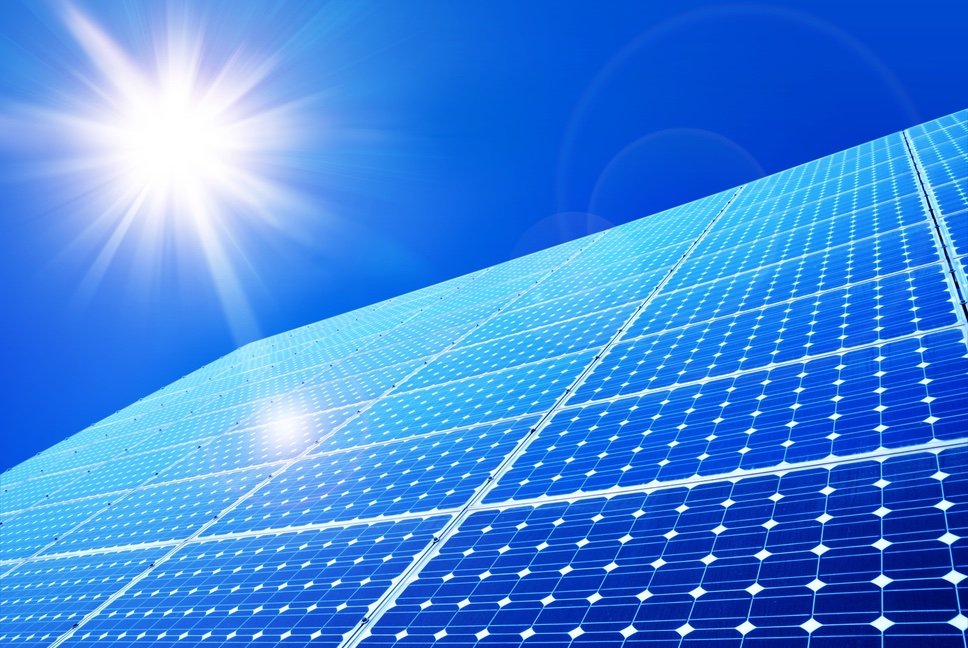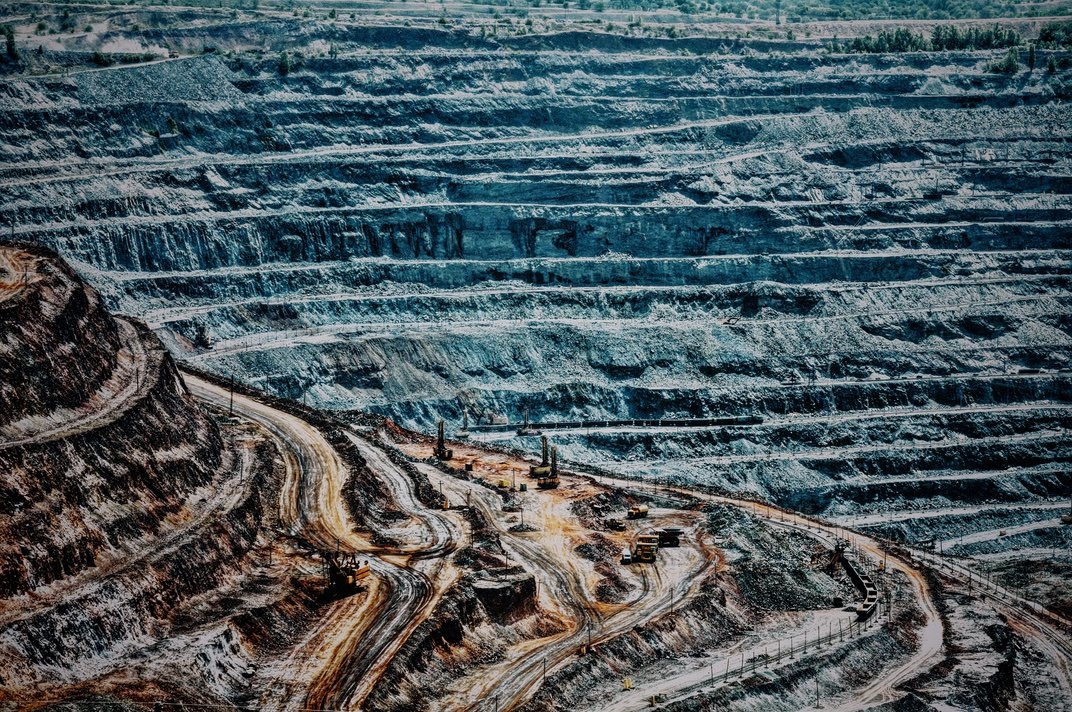How big is the environmental dilemma in switching to clean energy?
Pretext
That is an essential question! With regard to Brazil, the question also arises as to what effects and opportunities arise for the nation on Sugarloaf Mountain.
In the past years we at iMB have been working with increasing regularity on project missions in various sectors of the commodity industry in different nations. Over time, projects with a direct or strong indirect relation to the so-called energy transition have increased. The partly at first sight contradictory aspects and related dilemmas became more and more visible. Through the project missions in the different industrial sectors such apparent contradictions crystallized more and more and we were more and more able to establish the corresponding contexts. This blog will partly explore these questions and how they fit into the broader context of the South American continent.
South American landscape - Patagonia
But before we get into the specific topic, let's review the points that define the dilemma.
While transitioning to clean energy sources is essential for mitigating climate change and reducing environmental impacts, it is not without challenges and trade-offs.
installation site: headpumps and solar panels, Sāo Paulo, Brazil
Greenhouse Gas Emissions
The burning of fossil fuels (coal, oil, and natural gas) for energy production is a significant contributor to greenhouse gas emissions, which drive global warming and climate change. Switching to clean energy sources like solar, wind, hydro, and geothermal power can help reduce these emissions and slow down the rate of global warming.
Renewable Energy Availability and Reliability
One of the challenges with clean energy is its intermittent nature. Solar and wind power, for example, depend on weather conditions, making them less reliable than traditional fossil fuel-based power plants. Energy storage technologies and grid upgrades are necessary to ensure a stable and continuous supply of clean energy.
Infrastructure and Investment
Transitioning to clean energy requires substantial investments in infrastructure and technologies, including building new power plants, updating the electrical grid, and developing energy storage solutions. These investments can be costly and require significant planning and coordination.
Energy Transition Workforce
The shift to clean energy will also impact traditional energy sector workers, such as those in the coal and oil industries. A just transition strategy is essential to address potential job losses and to retrain and support affected workers in finding opportunities in the clean energy sector.
Environmental Impacts of Clean Energy Technologies
While clean energy sources are generally more environmentally friendly than fossil fuels during their operation, they can still have some environmental impacts. For instance, large-scale hydropower projects can disrupt ecosystems and displace communities. The extraction of rare earth metals used in some renewable technologies can also have ecological consequences if not managed responsibly.
Land Use and Biodiversity
Expanding renewable energy production can require significant land use, potentially leading to habitat loss and impacts on biodiversity. Careful planning and consideration of ecosystem services are necessary to minimize these effects.
Intermittency and Grid Integration
As mentioned earlier, the intermittent nature of some renewable energy sources can pose challenges for grid stability and management. Developing smart grid technologies and energy storage solutions can help address these issues.
Social and Political Challenges
The transition to clean energy may face opposition from vested interests in the fossil fuel industry or those reliant on it economically. Political and policy challenges can slow down or hinder progress in adopting clean energy solutions.
Despite these challenges, the urgency to address climate change and the environmental benefits of switching to clean energy make it a critical pathway for a sustainable future. In this blog, we want to contextualize some of the aspects mentioned above and highlight them in the scenario of the South American region.
Baseline scenario
Ores and minerals are the raw material for the energy transition, but their exploitation, global mining projects, is still very damaging, costing far more than just water and electricity. However, water consumption is a particular challenge for exploration. But not only environmental damage is in focus, but also human lives, as painfully learned in recent years, especially in Brazil.
The extraction of ores and minerals used in new technological applications using renewable energy sources is damaging the environment through massive mining projects. Major damage will occur especially in the extraction of copper, zinc, lead, lithium and nickel.
The author has himself worked in a Chilean copper mining consortium in the Atacama Desert in project planning, as well as advised a Chilean-European consortium on the construction of a water pipeline to supply the mines in northern Chile as on-demand manager/interim manager and accompanied the project on site. The author has also actively guided North American clients in the mining industry, as well as European companies in the commodity industry, in the reorganization and implementation of local community programs as an on-demand/interim manager in Brazil.
Open mine project, South America
Are ores and minerals the new oil of the energy transition?
Latin America is the focus of this new bonanza of the mining industry; be it Brazil, Bolivia, Argentina or Chile. In this context, we read almost daily about the deforestation of large areas in the Amazon Rainforest, intensive water use in the Atacama Desert in Chile, contamination of soil and groundwater throughout the region, disasters such as those of Brumadinho and Mariana, both municipalities in the state of Minas Gerais, Brazil.
The photos in the gallery above show images from Chile, Bolivia and Brazil. Some of the photos were taken in the Brazilian Amazon rainforest and show illegal timber exploitation. The geographical location of the exploration region is classified.
The decarbonization of the economy will proceed, replacing fossil fuels such as coal, oil and natural gas with renewable energy sources. On the other side of the balance sheet, however, it is highly likely, at least according to current technology and economic principles, that damage such as that listed will be the result of mining. These damages will occur many flying hours away from Northern Europe and North America.
The equipment used for wind and solar power plants, as well as the components of electric cars, consume a large amount of raw materials such as copper, lithium and nickel in their manufacture, causing demand for these and other minerals to explode.
The direct comparison between the conventional combustion engine and an electric car in terms of ore and mineral consumption gives an idea of what may be in store for the emerging economies of Latin America as well as Africa:
Average ore and mineral consumption car production 2019/20 in kg per vehicle (Source: IEA)
Conventional combustion engine
Copper 22 kg
Manganese 11 kg
Graphite, nickel, cobalt, lithium etc. <1.5 kg
combustion engine assembly
Electric car
Copper 53 kg
Manganese 25 kg
Graphite 66 kg
Nickel 40 kg
Cobalt 13 kg
Lithium 9 kg
Other 1 kg
charging station, Amsterdam, Netherlands
According to studies by the Organization for Economic Cooperation and Development (OECD), the environmental impact of mining is expected to at least double by 2060, mainly due to rising demand for the ores and minerals that are central to the energy transition, e-mobility and digitalization.
The reports indicate that the increase in damage will be greater than anything realized to date in Latin America and Africa, especially in the extraction of copper, zinc, lithium, lead and nickel.
Both copper and nickel are essential for energy conversion. Of the seven metals studied by the OECD (copper, nickel, zinc, lead, iron, aluminum and manganese), copper and nickel also have the greatest environmental impact per kilo of production.
The crucial question at this point which must be asked and answered is:
Is it worth it, then, to trade fossil fuel contamination for the environmental impact of mining?
This question is not easy to answer. The main question is whether the greater environmental impact of the mining projects can be offset by the reduction in damage that is or has been caused by the extraction of oil and coal. In a fundamental sense, this question of opportunity costs brings economics and ecology inextricably together. And the answer must not be ideological - from either side. Ecological and economic global damages can assume an extent which is not visualized in the current public discussions.
The analysis of the openly accessible sources says that coal is today, after sand, the second most mined and produced mineral resource in the world. About 8 billion tons of coal are mined annually. As part of the energy transition, many countries had already set themselves the goal of reducing the use of coal as an energy source. In the context of the COP26 conference, the phase-out of coal was even anchored.
From discussions with experts from the Brazilian University USP (University of São Paulo) in the fields of geology, mining engineering as well as environmental engineering, it is clear that it is not easy to calculate whether the reduction in coal mining will offset the environmental impact caused by explosive exploration of copper, nickel and lithium, fundamental ores and minerals of the energy transition. This depends, for example with regard to Brazil, on factors such as biodiversity in the mining areas.
It no longer seems worth discussing whether the energy transition is necessary. This question is answered by the available data. It is a matter of balancing the opportunity costs of ecology and economy. This discussion is mainly held in Northern Europe and North America, where obviously a strong focus is put on avoiding the damages from climate change. On the other hand, the massive impacts on local ecological and social systems caused by the necessary mining projects in Latin America and Africa have so far been ignored in public discussions.
local community market, La Paz, Bolivia
The discussion and hope so far assumes that these transformations of the energy transition will lead to a reduction of greenhouse gases, which will also imply ecological impacts in the regional opportunity factors. The central task with regard to mining companies is to extract minerals and ores in the cleanest and most responsible way.
It must be clear to all of us that it is not possible to mine ores and minerals without harming nature.
However, society's pressure for sustainability should mean that companies in the mining sector are obliged to find less environmentally damaging solutions in order to continue to have access to capital. The companies that are able to do this will increase in value.
Circular economy in the mining industry?
The question becomes interesting when it is embedded in the context of industrial ecology and circular economy. Especially the view on Chile with its lithium and copper mining shows the complexity, because the mining industry takes place in pure desert regions. Thus, the biodiversity factor is secondary and focuses almost exclusively on water and energy resources. Similar conditions apply to the desert regions of the Andean nation of Bolivia, where particularly rich lithium deposits have been confirmed.
Under the high alpine Andean salt lake Uyuni in Bolivia, the largest lithium deposits on earth are suspected. In Chile, lithium is mined in the Salar de Atacama salt lake in the far north of the country, the Antofagasta and Iquique region. The planned mining of the metal, which is important for rechargeable batteries and energy storage media, arouses economic high spirits, but is controversial because of the high water consumption.
Salt Flat, Uyuni Region, Bolivia
To produce lithium, the highly mineral-rich groundwater is pumped into huge man-made basins for targeted evaporation. Pumping out the salty brine causes the local groundwater level to drop dramatically.
To extract one ton of lithium, an amount of 0.4 million to 2.0 million liters of brine is needed, depending on the salt concentration. As a rough estimate, it can be assumed that about two million liters of water must be evaporated for each ton of lithium extracted. Undoubtedly, lithium mining represents one of the most invasive interventions in the local environment. Underground river courses in the Andes mountain range have their flow directions to Chile (Pacific) or Argentina/Brazil (Atlantic). These river courses flush minerals important for local agriculture into the soils. The industrial evaporation process of lithium exploration cannot be verified in its ecological and social impacts until today.
The global reserves of lithium amount to about 15 million tons. This means that the range of raw materials would be about 60 years with a demand of 240,000 tons frozen at today's level. If the volume needed for energy transformation is calculated as a static range with the demand for 2050, the reserves will last for about 13 years.
Thus, the confirmed lithium reserves could meet world demand in the projected transformation through 2050. While components that contain lithium can be recycled, to date there is no recycling technology that can deliver lithium in pure form for use in new lithium-ion batteries.
A fundamental question from the perspective of the entire value chain where these Chilean, Argentine and Bolivian mine products will be used must answer how the ores and metals will be used. This means that mining projects must include the value chain in the investment planning from the very beginning.
Should they be used to build a better infrastructure? Keyword: no conventional house roof and then solar panels built over it, but the roof is replaced by solar panels.
Are Chilean, Argentine and Bolivian mining companies trying to generate more renewable energy? Keyword: globally highest solar radiation in the Atacama Desert as well as the Altiplano of Bolivia.
photovoltaic farm servicing a mining project, South America
If that is the case, then there is a positive opportunity to invest in these ores and metals, even if there are constant negative impacts. The compensation effect can be disproportionately high.
A look at the exploration of copper also shows dramatic conditions for the environment. Of the minerals that are likely to be consumed more due to the decarbonization of the economy, copper is one of the most problematic mining industry exploration products from an environmental perspective.
This is due to the fact that only 1% of the material processed and moved to extract the metal is used. To get an idea of this, consider the comparison with iron ore; here the percentage varies between 40% and 70%. Thus, the exploration of copper requires gigantic excavations to extract the material. The earth rearrangements cause massive environmental destruction and leave behind a gigantic amount of industrial waste.
The problem is likely to become much more dramatic. As the demand for metals increases, it will also be necessary to use less efficient mines that are located in areas of greater risk to the environment and people, or that may generate even greater amounts of waste.
cooper mine, Chile
The volume of these earth reburials will increase at a rate not previously known. When such a waste dump is created, it does not disappear after a few years. It remains forever. And it is precisely such earth rearrangements that are the cause of disasters like Mariana and Brumadinho in Brazil.
Within a little more than three years, two dams broke in Brazil, killing nearly 300 people. People are still missing to this day. These disasters also contaminated regionally important rivers. Toxic sediments and heavy metals were washed all the way to the Abrolhos Maritime National Park in the state of Bahia. Dozens of hectares of native Atlantic rainforest vegetation were destroyed or damaged for generations.
The technical model of the Mariana and Brumadinho dams and catch basins for the mining industry was banned in Brazil after the tragedies. However, not all facilities have been fully rebuilt to date, so latent risks continue to be accepted.
The major mining companies active in Brazil want to become low environmental impact mining companies, and committed to zero net carbon emissions by 2050.
Energy and water
Another and urgent environmental problem of copper mining is the high energy demand in exploration. Thus, if mining companies do not use renewable energy, or use too little, this will also have an impact on gas emissions.
For example, Chile accounts for 30% of global copper production. At the La Escondida mine in the Antofagasta region - the largest copper mine in the world - about 40% of energy needs are met by diesel. This figure does not take into account the energy used to desalinate the water.
But not only electrical energy is used for this process. Desalination also requires a large amount of water, an extremely scarce resource in the region. Basically, water is the number one problem for most mining companies. And the case of Chile is very extreme because the mines are located in the driest desert on the globe.
abandoned industrial plant in the Chilean desert, Humberstone, II. Region, Chile
Recycling as an alternative to reducing exploration?
Even when mines take up large areas of land and cause deforestation, as in Brazil, for example, there are ways to reduce the impact on the environment that go beyond the compensation measures required by the authorities today. One of these is to find a way to reuse industrial waste. In many cases, it is possible to process the waste and use it for sand or ceramics.
The world consumes more sand than anything else mineral. The global mining industry generates about 10 billion tons of mining waste. The volume of sand we consume as a human race is in that range.
However, the conversion of material from earth reburial to sand depends on the material being disposed of. In the best cases, 80 percent utilization is possible. Copper residues, however, are often more difficult to separate. In such mining projects, reuse is often not even 50% possible.
In 2022, a Canadian mining company plans to start new lithium production in Brazil. The project also includes the recycling of materials from production and earth reburial into adjacent production processes. Ceramics processing industries will be located that can reuse the rice-dual materials as raw material.
The project will be implemented in the Jequitinhonha Valley. The valley is located in the extreme north of the state of Minas Gerais, a good 700 km north of the capital Belo Horizonte. The valley is popularly known as the "Valley of Poverty." Massive fire clearing has been used in the region to cultivate local agriculture, destroying the foundations for a balanced and sustainable life.
Like the mines in Chile and Bolivia, this Brazilian project will be located in an arid region. To overcome water scarcity and avoid further harming local communities, the company plans to use water from the Jequitinhonha River in a fully integrated circular economy. The project is expected to become a global case study, balancing mining industries on social and environmental issues.
Recycling: Copper
Although recycling waste from copper mine production is more difficult, the metal has an advantage over lithium mining. Technologies already exist for its recycling, reducing the need for original mining. In Brazil, copper producers have doubled their recycled content to between 22-25%.
The recycled copper is not more economical, but gives companies more flexibility in the supply chain. When copper is exported from Chile to Brazil for processing into plate, the process can take about two months. When the process is carried out with scrap copper, it is completed in fourteen days.
Focus: clean metal
Alternative: Copper recycling is one way to reduce mining.
Material: Copper does not lose its physical properties during recycling and can be fully reused.
Partnership: the copper produced during production is processed and becomes raw material.
Speed: By increasing the processing of these materials, the company gains flexibility by not having to import the metal.
Deadline: When the raw material is recycled rather than extracted from exploration, the deadline for delivering products to customers is reduced by approximately 75%.
Product: When recycled, copper is processed into slabs.
Export: These slaps can be quickly exported or processed into products such as wire.
Gaining time - making consistent use of bridging technologies, the example of ethanol
Brazil is the world's second largest producer of ethanol fuel, after the United States. Brazil and the United States together lead industrial ethanol production, which currently accounted for about 87% of world production. Today, Brazil produces nearly 30 billion liters, which represents 27% of the ethanol used as fuel worldwide. In. Unlike U.S. corn-based ethanol, Brazilian ethanol is produced from sugarcane and has no impact on food production or prices.
Brazil is considered the world's first sustainable biofuels-based economy, is a leader in the biofuels industry, and serves as a model for other countries; its sugarcane ethanol is considered the most successful alternative fuel to date because it has a noticeably higher calorific value compared to all other agricultural base feedstocks.
However, some experts believe that the Brazilian model is only sustainable in Brazil due to its advanced agro-industrial technology and vast acreage. Also, a common argument is that Brazilian ethanol is a solution only for some countries in the tropical zone of Latin America, the Caribbean and Africa. However, these arguments do not seem conclusive. The use of modern agricultural technology and larger cultivated areas can be economically represented in the restructuring of agro-production in other countries.
urban environment, Sāo Paulo, Brazil
The Brazilian ethanol fuel program is based on the world's most efficient agricultural technology for sugarcane cultivation and uses modern equipment and low-cost crops as feedstock, while the remaining bagasse is fully used to generate heat and electricity. This results in a very competitive price and the highest global energy balance (energy production/energy use).
The U.S. Environmental Protection Agency classifies Brazilian ethanol as the world's most advanced biofuel, reducing up to near 70% of total life-cycle greenhouse gas emissions, including direct emissions from indirect land use.
In Brazil, there are no passenger vehicles that run only on gasoline. Since 1976, the government has made it mandatory to blend anhydrous ethanol with gasoline, with percentages ranging from 10% to 22%. Since July 1, 2007, the mandatory blend has been 25% anhydrous ethanol and 75% gasoline (E25). The lower limit has been made more flexible in recent years, as ethanol supply bottlenecks have repeatedly occurred between harvest seasons.
Of course, pure ethanol is also refueled in Brazil and offered at all filling stations in the country. The Brazilian automotive industry has developed flex-fuel vehicles that can run on any ratio of gasoline and hydrogenated ethanol (E100). These flex-fuel vehicles launched on the market have become a commercial success and now represent approximately 96% of all new car and light truck sales.
Currently, the Brazilian vehicle fleet moves with at least 50% ethanol-based. Ethanol has completely replaced the carcinogenic aromatic compounds contained in gasoline, thereby massively reducing emissions of particulates and other harmful compounds such as carbon monoxide, formaldehyde, and volatile organic compounds that generate photochemical smog.
With ongoing measures such as the RenovaBio program, among others, Brazil will reduce its CO2 emissions by 690 million tons by 2030, equivalent to more than one year of total emissions from France.
How does the life cycle assessment behave?
The technological mobility option to replace internal combustion engines with electric cars with battery leads to a reduction of emissions, but emission zero - far away.
Taking into account the LCA, the electric cars planned for the European continent emit about 92 gCO2e/km today and 74 gCO2e/km with all the advances theoretically implemented by 2035.
Looking at Brazil, with its nearly neutral ethanol carbon footprint, the greenhouse gas emissions of the current Brazilian vehicle fleet is 58 gCO2e/km. In 2018, the new Rota2030 law was passed. With its implementation, the country is moving toward 47 gCO2e/km.
Technologically, the latest flex-ethanol hybrid car generation was launched on the national market in Brazil in October 2019. Already, this vehicle technology is considered the cleanest car in the world, emitting only 39 gCO2e/km. When fully implemented by 2030, emissions will reach just 27 gCO2e/km.
Summary
Circular economy in the mining industry is possible. Throughout the value chain, there are many approaches to sharpen the focus of opportunity costs from ecology and economy.
However, the current public discussion does not address the issue of massive interventions in local ecological and social systems by significantly more mining projects, generated by the paradigm shift of the energy transition, especially in Latin America and Africa.
A more integral view from the perspective of Europe and North America would be able to give a boost to the global discussion. The issue is not one of abandonment, but of evaluation of the entire value chain. This discussion and evaluation should definitely be conducted in an open-ended manner. The focus cannot and must not become a race between the economic giants North America, Europe and China without integrating the massive impacts in Latin America and Africa into the scenario.
Also, the political discussions to avoid overburdening voters in Europe and North America economically are anything but helpful. Seemingly, we are still not really able to assess the impact well when looking at it holistically. The discussion requires especially from Europe and North America a higher sensitivity to integrate also the impact of giga-mining projects in Latin America and Africa into the scenario.
Looking at the environmental damages generated by mining projects, it quickly becomes clear that these damages occur in the local ecosystems of Latin America and Africa, but that the benefits from their use with less CO2 emissions and better air are mainly booked in Europe and North America. From this, it is evident that national or region-centric reasoning does not become helpful in answering the question of decarbonizing the economy.
The intelligent and result-open discussion on the consistent use of existing bridge technologies should be integrated into the scenario. Consistent and targeted use of combustion technology for vehicles using biofuels, such as ethanol, can lead to drastic minimization of locally harmful mining projects. Also, the smarter use of ores and minerals could potentially be better utilized in digitalization than in automotive manufacturing. In this context, a consistent restructuring of agriculture in Europe and North America should not be taboo.
It is about a true conversion to sustainable management of raw materials, with simultaneous transformation of economic cycles to avoid climate-damaging interventions in ecosystems.

